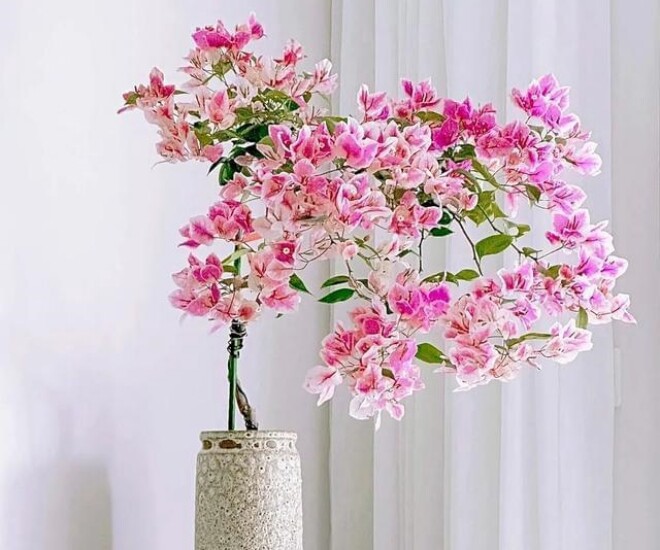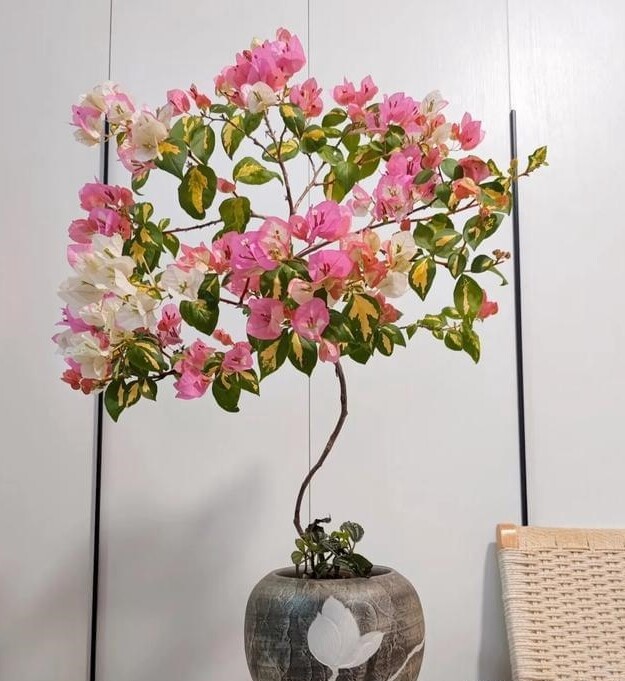While bougainvillea is undoubtedly one of the most vibrant and colorful flowers to grace gardens, especially in June, its blooming season doesn’t last forever. As the hot weather sets in, the plant enters a resting phase, signaling the end of its floral display.

However, this doesn’t mean you should neglect your bougainvillea. On the contrary, there’s one crucial task you must undertake immediately after its blooming period to ensure its health and promote future blooms. Neglecting this step could result in an unruly, sickly plant that struggles to flower again.
1. The Crucial Post-Flowering Task: Pruning
As June’s vibrant display of bougainvillea flowers comes to an end, it’s essential to give your plant some attention. Pruning is the key to maintaining its health and encouraging future blooms. By reducing the plant’s energy consumption, pruning helps it withstand the summer heat and prepares it for the next flowering cycle.

– Remove Faded Flowers and Dry Leaves
Promptly remove faded or dried-out flowers to prevent them from draining valuable nutrients from the plant, which can hinder its future growth. Also, cut away any dry or withered leaves, as they detract from the plant’s overall appearance.
– Trim Overgrown Branches
Prune away densely packed, weak, or crossed branches that hinder airflow and light absorption. This promotes better air circulation, enhances light exposure, and reduces the risk of pest infestations. When trimming, consider the overall shape of the plant to maintain its aesthetic appeal.
– Shorten Long Branches
Cut back excessively long branches or practice pinching, which involves cutting a portion of the branch. This encourages a compact and controlled growth habit, stimulates the growth of lateral branches, and ultimately results in a more prolific display of flowers.

2. Post-Pruning Care for Bougainvillea
After pruning your bougainvillea, it’s essential to adjust your care routine to accommodate the plant’s resting phase during the hot summer months:
– Water When the Soil Dries
Even during its resting phase, the plant continues to grow slowly, so water it thoroughly when the top two centimeters of soil are dry. In hot weather, water evaporates quickly, and your bougainvillea will need more frequent watering. Avoid letting the soil dry out completely, as this can lead to root damage and death.
Ensure proper ventilation after watering to prevent damp conditions that invite pests and root rot.

– Avoid Intense Midday Sun
While bougainvillea thrives in sunlight, intense midday sun (especially between 11 a.m. and 2 p.m.) can scorch its leaves. Therefore, shield your plant from the intense midday rays while still allowing it to soak up the sun during the cooler parts of the day to promote growth.
Insufficient sunlight will result in leggy, weak growth and sparse flowering.
– Halt Fertilizer Applications
As your bougainvillea slows down its growth due to high temperatures, its nutritional requirements decrease. Applying fertilizer at this time can cause fertilizer burn and damage the roots. Hold off on fertilizing until cooler weather arrives and the plant resumes active growth to stimulate flowering.

3. Encouraging Bougainvillea to Bloom Again
To enjoy a vibrant display of bougainvillea flowers once more, focus on these three critical factors:
– Sunlight: When the weather cools down, expose your bougainvillea to full sun. Ensure it receives at least six hours of direct sunlight daily. The more sun it gets, the healthier it will be, and the more profuse and vibrant its blooms will become.
– Fertilizer: Once your bougainvillea shows signs of recovery, use well-rotted oil cake fertilizer diluted in water and apply it every 15 days. This improves soil structure, promotes robust root growth, and encourages the development of new branches.
When the plant starts to bud, switch to a 0.3% solution of potassium dihydrogen phosphate (KH₂PO₄), applied every 15 days. This fertilizer provides both water and essential nutrients to support consistent and vigorous flowering. Remember to water when the soil is dry to enhance absorption.
– Watering: When the leaves start to droop slightly, water your bougainvillea thoroughly. Maintain this cycle, combined with adequate sunlight and fertilizer, and you’ll be rewarded with a stunning display of blooms.
Why Planting Bougainvillea in Front of Your House Brings Luck and Fortune, but Growing it Indoors Hinders Positive Energy Flow?
Introducing GĐXH – the vibrant and captivating bougainvillea, a flowering vine that adds a touch of tropical paradise to any home. While its vibrant hues and lush foliage may entice many, it is important to approach its cultivation with caution. According to the principles of Feng Shui, planting bougainvillea indoors may bring about adverse effects on the energy and well-being of your household. Uncover the secrets behind this beautiful yet enigmatic plant and explore the delicate balance between its outdoor allure and indoor implications.
How to Grow American Yellow Lemon Trees
The Meyer lemon tree, a hybrid native to China, is a popular choice for home gardeners due to its ease of cultivation and abundant fruit production. Growing your own Meyer lemon tree can be a rewarding experience, and with the right care and attention, you can enjoy a plentiful harvest of juicy, aromatic lemons. This guide will take you through the simple steps to cultivate and nurture your very own Meyer lemon tree, ensuring a vibrant and productive addition to your garden.






































